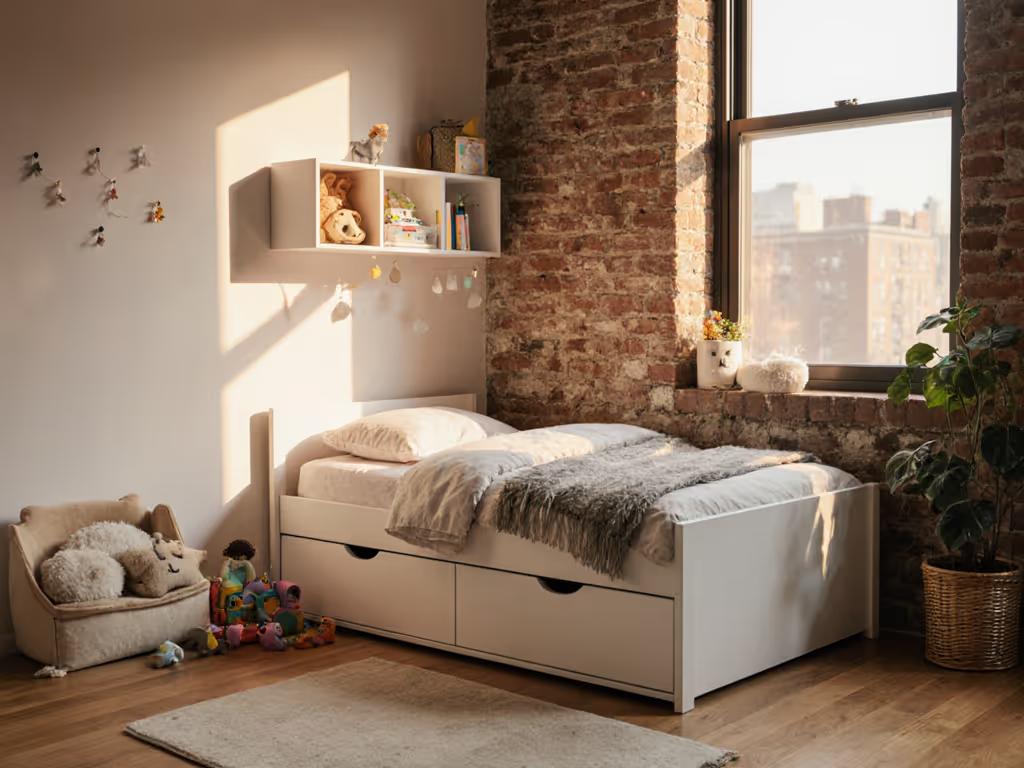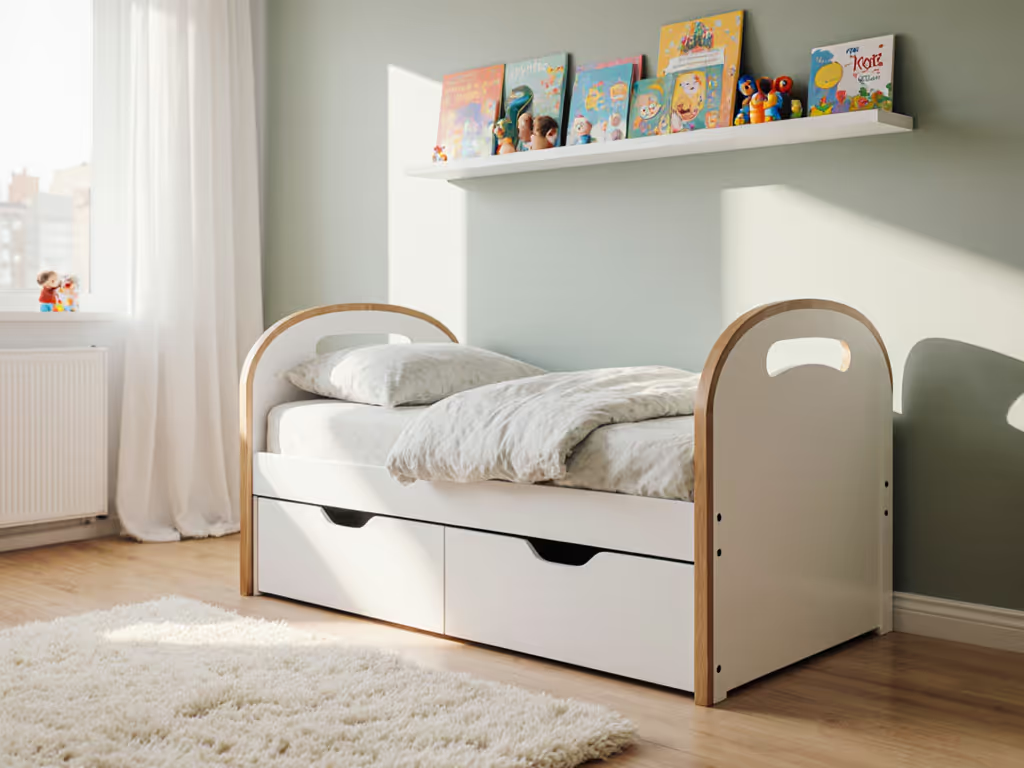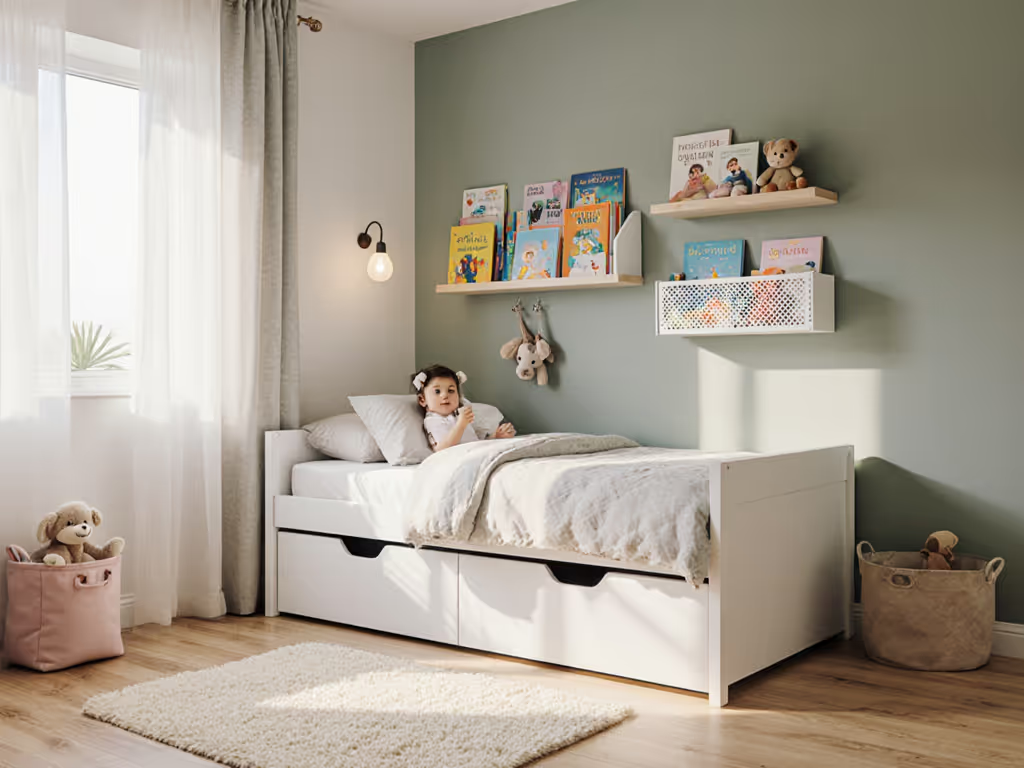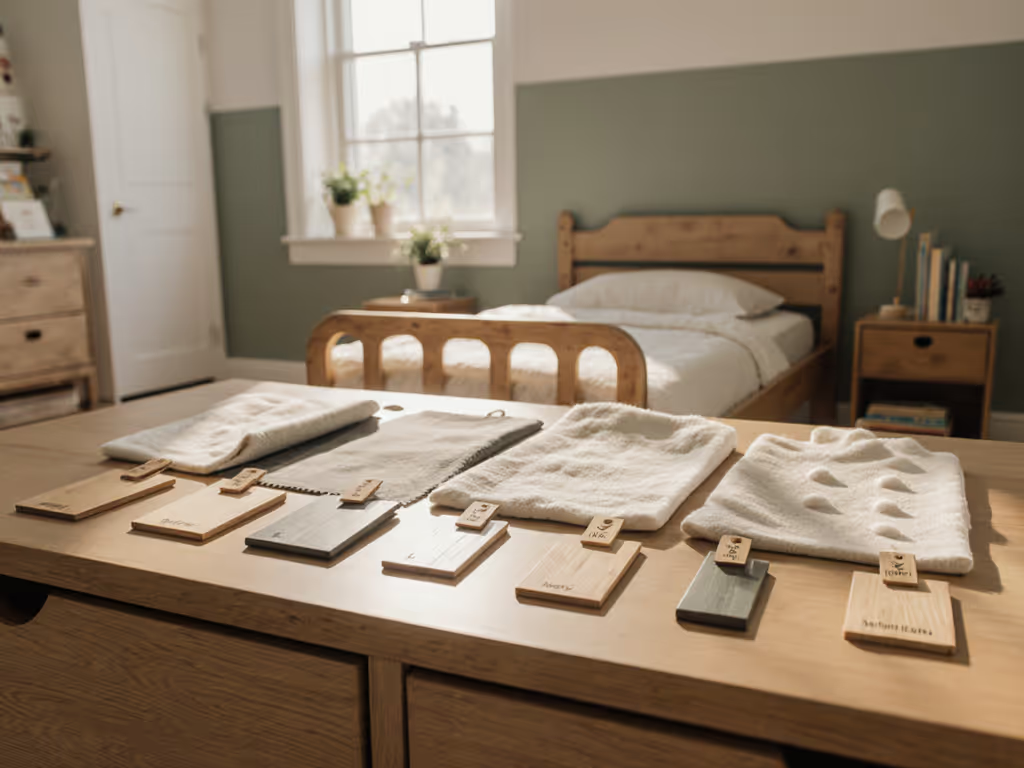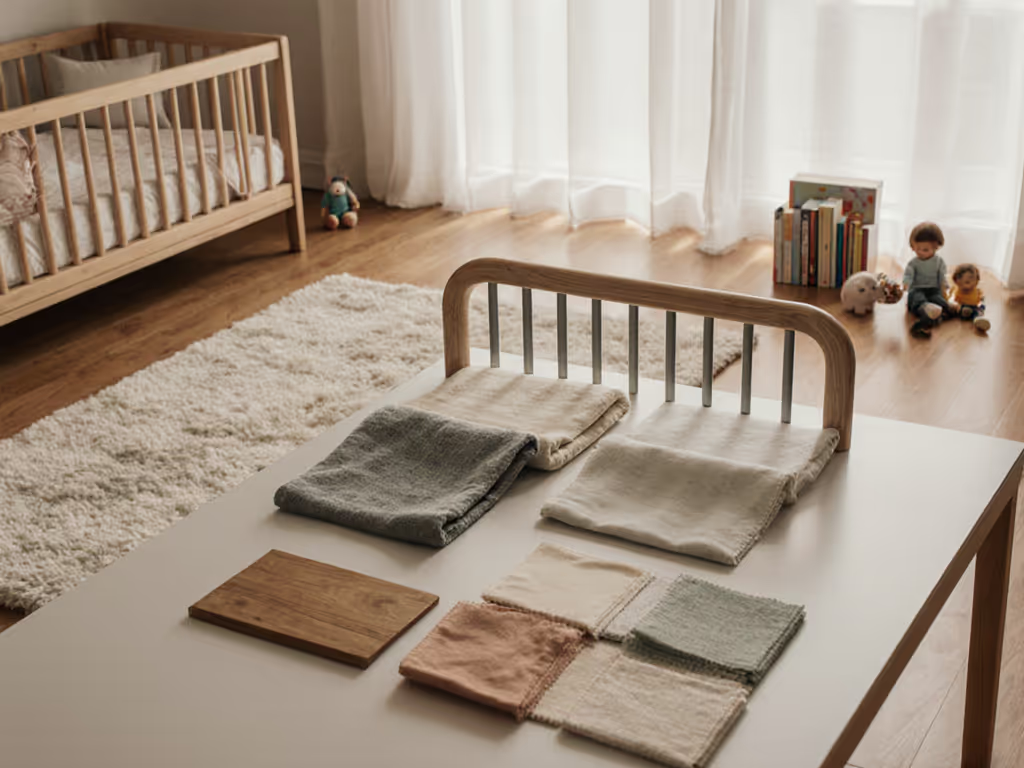
Toddler Bed Transition Guide: Ensure a Smooth Move from Crib
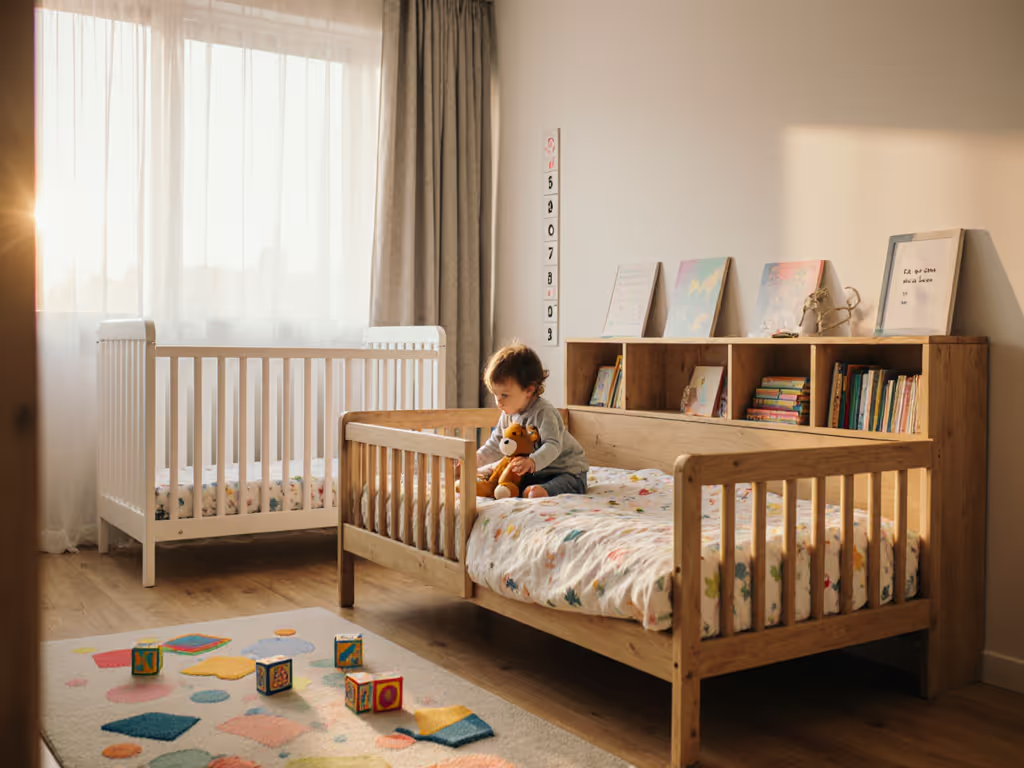
Did you know that more than half of toddlers start climbing out of their cribs before age three? This leap toward independence can surprise many parents and spark questions about timing and safety. Choosing the right toddler bed and preparing for the switch are key to smoother nights and greater peace of mind. Understanding the signs your child is ready helps create a confident, positive start to this important transition.
Quick Summary
| Key Point | Explanation |
|---|---|
| 1. Bed height is crucial for safety | Choose toddler beds that are low to the ground to minimize fall risks during sleep transitions. |
| 2. Involvement reduces anxiety | Allow your toddler to help select bedding and decor to create excitement and ease the transition to a new bed. |
| 3. Consistency in bedtime routines matters | Maintain familiar nightly rituals like reading or singing to help your child adjust smoothly to the new sleeping environment. |
| 4. Create a safe sleep space | Position the bed away from windows and heavy furniture, and ensure safety rails are secure to protect during sleep. |
| 5. Monitor and adjust as needed | Regularly check the room for hazards and adjust bedtime routines or comfort items based on your child's changing needs and behavior. |
Step 1: Assess Readiness and Choose the Right Toddler Bed
Transitioning your little one from a crib to a toddler bed is a big milestone in childhood development. This section will walk you through understanding when your child is ready and how to select the perfect bed that ensures safety and comfort.
Most children become candidates for a toddler bed between 18 months and 3 years old. But how do you know it's the right time? Watch for clear signals like your child attempting to climb out of the crib or consistently feeling cramped in their sleeping space. These are strong indicators that your toddler is ready for a bed upgrade.
Safety should be your top priority when choosing a toddler bed. Look for models that sit low to the ground and include protective side rails. These features prevent accidental falls and give both you and your child confidence during this transition. Measure your available room space and consider beds that maximize safety without overwhelming the bedroom.
Here's a summary of key factors to consider when choosing a toddler bed:
| Factor | Why It Matters | What to Look For |
|---|---|---|
| Bed Height | Prevents falls | Low to the ground |
| Side Rails | Enhances safety | Sturdy, secure, minimal gaps |
| Room Space | Comfort & safety | Fits room, not too bulky |
| Child Involvement | Reduces anxiety | Let child choose color/bedding |
| Fun Bedding/Design | Builds excitement | Favorite colors, playful themes |
Involve your toddler in the selection process to build excitement and reduce potential bedtime anxiety. Let them choose bedding with fun patterns or help pick out a bed color they love. This approach transforms the transition from a potential challenge into an adventure they can look forward to.
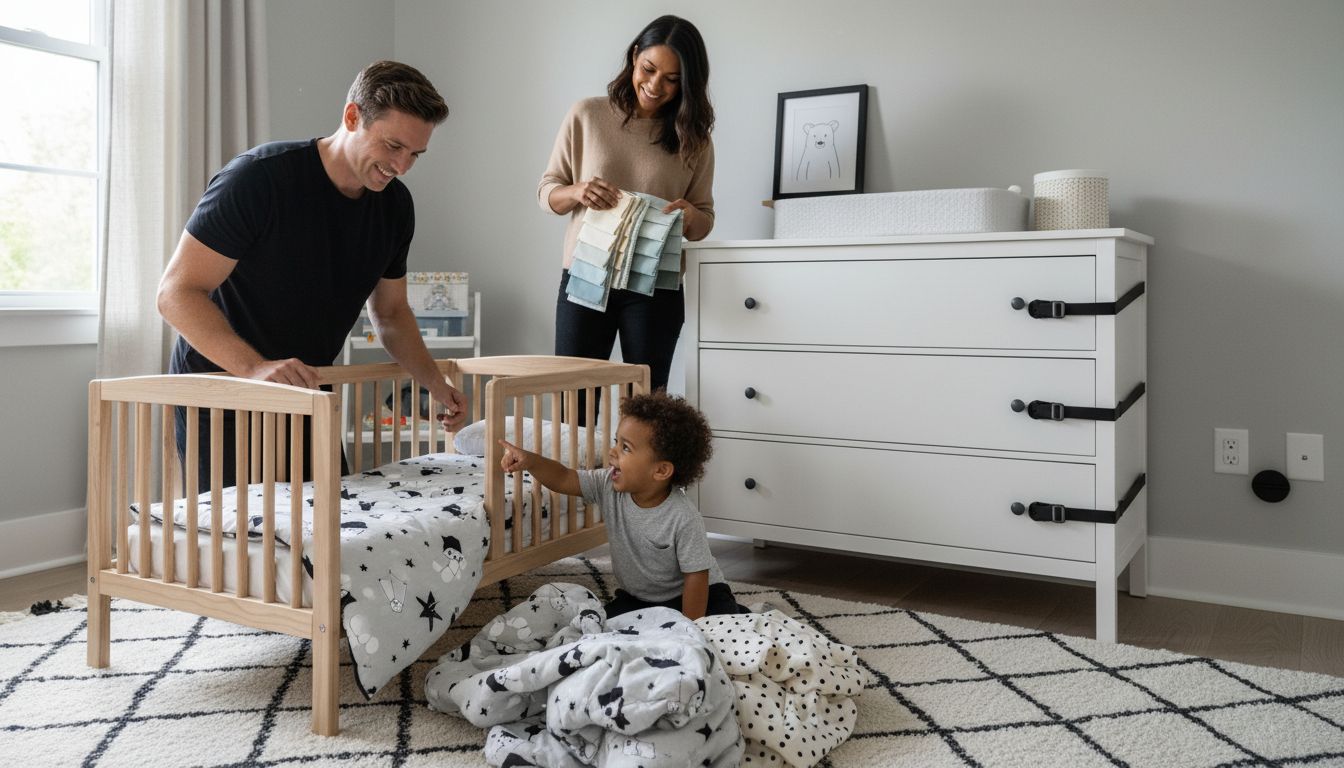
Pro Tip: Keep your existing bedtime routine consistent during this change. Familiar rituals like storytime or a specific goodnight song can provide comfort and stability.
Once you select the right toddler bed, prepare for a period of adjustment. Your child might test boundaries or take time to feel fully comfortable. Stay patient and provide gentle guidance. The next step involves making the bed inviting and preparing your little one for their new sleeping environment.
Step 2: Prepare the Sleep Space for Safety and Comfort
Now that you have selected the right toddler bed, creating a safe and secure sleep environment becomes your primary focus. This section will guide you through transforming your child's bedroom into a protective and comfortable sanctuary that minimizes risks and promotes peaceful sleep.
Start by carefully positioning the toddler bed. Place it away from windows to prevent potential falls or drafts. Keep the bed clear from heavy furniture like dressers or bookshelves that could topple if your curious toddler decides to climb. If possible, position the bed against a wall to provide additional stability and reduce potential tumbling risks.
Safety rails are non negotiable during this transition. Choose bed models with sturdy side rails that prevent nighttime rolling and give your child a sense of security. Ensure the rails are tightly secured and leave minimal gap space where little limbs might get caught. Measure the rails against your child's size to confirm proper protection.
Remove potential hazards from the immediate sleeping area. Small toys, loose electrical cords, and decorative items that could be pulled down should be relocated. Create a clear zone around the bed that allows your toddler to move safely if they wake up during the night.
Pro Tip: Use soft nightlights that provide gentle illumination without disrupting sleep patterns. This helps reduce potential nighttime anxiety and helps your child feel more comfortable in their new sleeping space.
Consider incorporating familiar bedding or a special comfort object to help your child feel more secure. A favorite blanket or stuffed animal can make the new bed feel less intimidating and more like a welcoming personal space. The goal is to make this transition feel like an exciting milestone rather than a scary change.
Stay consistent with your existing bedtime routine. Whether it involves storytime, a warm bath, or singing a special lullaby, maintaining familiar rhythms will help your toddler adjust to the new bed more smoothly. Patience and positive reinforcement are key during this transition period.
Step 3: Introduce the Toddler Bed Using Positive Routines
Making the toddler bed feel like an exciting adventure requires thoughtful strategy and plenty of positive reinforcement. This section will help you transform the transition into a memorable and comforting experience that builds your child's confidence and sense of independence.
Start by giving your toddler a sense of ownership in their new sleeping space. Let them choose special bedding with fun patterns or a new pillowcase that makes them feel grown up. Involve them in selecting a favorite stuffed animal or comfort object that will become their trusted bedtime companion. This personal touch helps create excitement and reduces potential anxiety about the change.
Maintain your existing bedtime routine with subtle modifications. If storytime traditionally happened in the crib, continue reading in the new toddler bed. Sing the same lullabies. Keep bath time and pajama rituals consistent. These familiar elements provide a sense of security during an otherwise significant life transition.
Use visual tools to set clear expectations. A simple color clock or reward chart can help your toddler understand bedtime boundaries. Create a special bedtime ritual that celebrates their new big kid status. This might include a special handshake or a brief celebration of how brave and grown up they are becoming.
Pro Tip: Practice daytime bed exploration to reduce nighttime anxiety. Let your child play on the bed during the day wearing comfortable clothes to build positive associations.
Be patient and prepared for potential challenges. Some nights will go smoothly while others might involve extra cuddles or reassurance. Respond consistently and calmly. Praise your child for staying in bed and demonstrate excitement about their growing independence.
Remember that every child adapts differently. Some will embrace the new bed immediately while others might need more time and gentle guidance. Your positive attitude and consistent approach will help make this transition a smooth and memorable milestone in your child's development.
Step 4: Support Your Child Through the First Nights
The first few nights in a toddler bed can feel like navigating uncharted territory for both you and your child. This section will prepare you to handle nighttime challenges with patience, consistency, and a calm approach that builds trust and reinforces healthy sleep habits.
Expect that your toddler will likely test boundaries during these initial nights. They might repeatedly get out of bed, call for you, or try to explore their newfound freedom. When this happens, your response is crucial. Remain calm and neutral. Gently guide them back to bed without engaging in long conversations or turning the situation into a game. Use a soft voice and minimal interaction to show that bedtime is serious and consistent.
Create a predictable response protocol for nighttime wandering. If your child gets out of bed, walk them back immediately and tuck them in without drama. Be firm but loving. Repeat this process as many times as necessary. Your consistent reaction helps them understand that leaving the bed is not an option. Some parents find success with a gradual retreat method where you sit further from the bed each night until they feel secure.
Prepare for potential sleep disruptions by ensuring your child feels safe. Leave a soft nightlight on, keep their favorite comfort object nearby, and maintain a soothing bedroom environment. Some children might benefit from a special bedtime pass that allows one quick visit with a parent during the night.
Pro Tip: If your child becomes consistently distressed or sleep disruptions become severe, it might be wise to temporarily return to the crib and try the transition again in a few weeks.
Remember that every child adapts differently. Some will embrace the new sleeping arrangement quickly, while others might take weeks to fully adjust. Your patience, consistent approach, and positive reinforcement are the most powerful tools in making this transition successful.
Stay committed to your strategy but also remain flexible. Some nights will test your resolve, but with time and consistent guidance, your toddler will develop a sense of security and independence in their new big kid bed.
Step 5: Verify Security and Adjust as Needed
Transitioning to a toddler bed is an ongoing process that requires continuous monitoring and adaptation. This section will help you create a dynamic safety strategy that evolves with your child's growing independence and changing sleep patterns.
Conduct regular room safety assessments to ensure your toddler's environment remains secure. Anchor heavy furniture like dressers and bookshelves to prevent potential tipping. Cover electrical outlets with childproof caps and secure loose cords that might pose a strangulation risk. Remove or carefully place small objects that could become choking hazards during nighttime exploration.
Pay close attention to your child's behavior and sleep patterns during the first few weeks. Watch for signs of anxiety or disrupted sleep that might indicate the need for adjustments. Some children might need additional comfort objects or slight modifications to their bedtime routine. Be prepared to make gentle changes that help them feel more secure.
Utilize visual tools to help reinforce boundaries and provide a sense of structure. A simple color clock or bedtime chart can help your toddler understand sleep expectations. These visual aids can be particularly helpful for children who struggle with the new sleeping arrangement and need clear guidelines.
Pro Tip: Consider using a baby monitor or audio device during the initial transition period to quickly respond to your child's nighttime needs without constant physical checking.
Maintain flexibility in your approach. What works one week might need adjustment the next. Some children adapt quickly while others require more time and patience. Your willingness to observe and respond to your child's unique needs will be crucial in making this transition successful.
Remember that every small adjustment is part of a larger learning process. Your consistent support and attentive approach will help your toddler develop confidence and independence in their new sleeping environment.
Make Your Toddler's Transition to a Big Kid Bed Easier Today
Moving from a crib to a toddler bed can feel overwhelming. You want to provide a safe, comfortable, and inviting space for your child while managing safety concerns like bed height and side rails. The guide perfectly captures common challenges such as ensuring room safety, comforting routines, and consistent nighttime support. If you are looking for expert advice on selecting toddler beds that prioritize these key factors, we have you covered.
Discover carefully curated tips and comparisons on finding toddler beds that are both functional and space-efficient at City Toddler Beds. Take control of this important milestone with confidence and reduce bedtime anxiety by making an informed choice. Don’t wait — explore our comprehensive resources now and create the perfect sleep environment for your growing little one.
Frequently Asked Questions
When is my toddler ready to transition from a crib to a toddler bed?
Most children are ready for a toddler bed between 18 months and 3 years old. Look for signs like climbing out of the crib or appearing cramped in their sleeping space to determine readiness.
What safety features should I look for in a toddler bed?
Prioritize safety features like low bed height and sturdy side rails to prevent falls. Ensure the side rails are secure and have minimal gaps to protect little limbs during sleep.
How can I prepare my child's room for a new toddler bed?
Position the toddler bed away from windows and heavy furniture to minimize risks. Clear any potential hazards from the sleep area and maintain a comforting atmosphere with soft nightlights and familiar items.
What bedtime routine modifications should I make when transitioning to a toddler bed?
Keep bath time, storytime, and lullabies consistent to provide security during the transition. Gradually involve your toddler in their bedtime ritual to celebrate their new big kid status and make it special.
How do I handle nighttime challenges during the first few nights in the toddler bed?
Maintain a calm and consistent response if your toddler gets out of bed at night. Gently guide them back to bed with minimal interaction, reinforcing that staying in bed is expected.
What adjustments should I make if my toddler struggles with the transition?
Observe your child's behavior and look for signs of anxiety or disrupted sleep patterns. Be prepared to make small changes, like adding comfort objects or revising the bedtime routine, to help them feel more secure.

